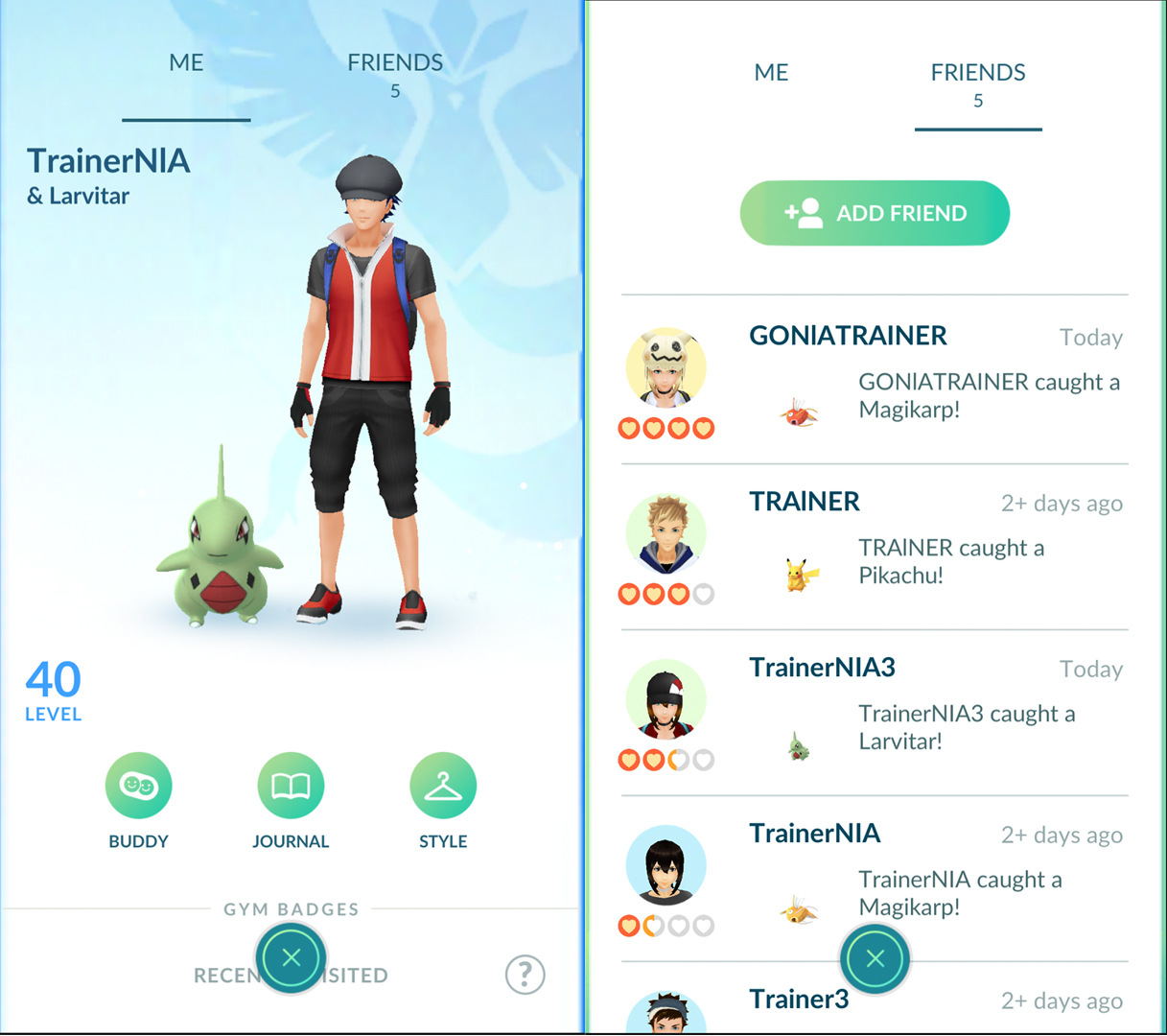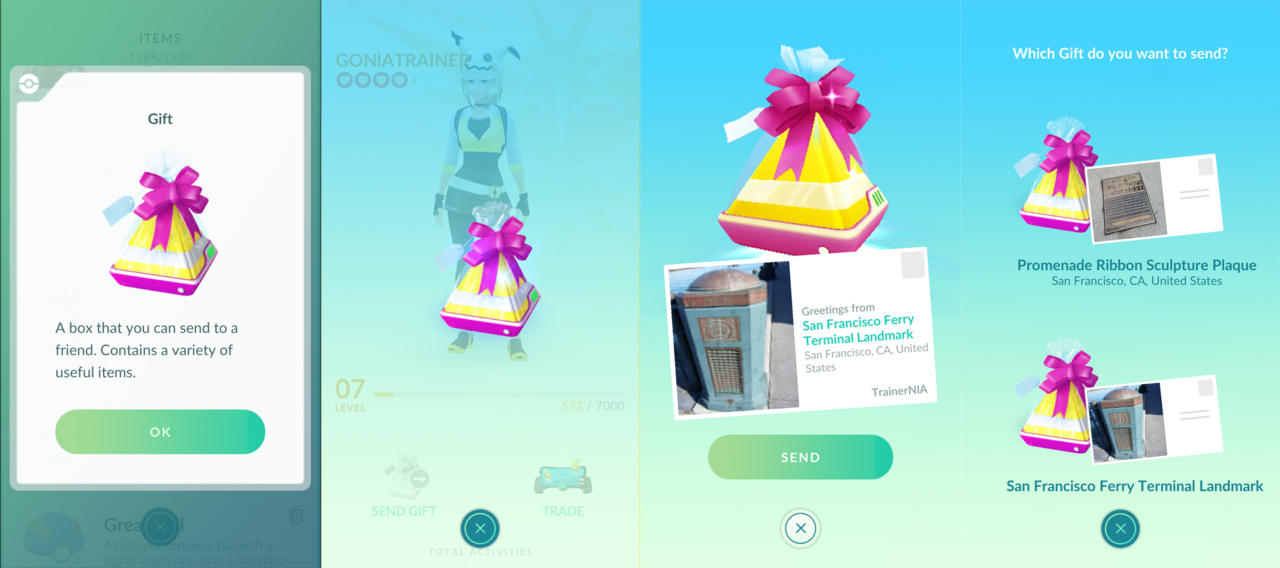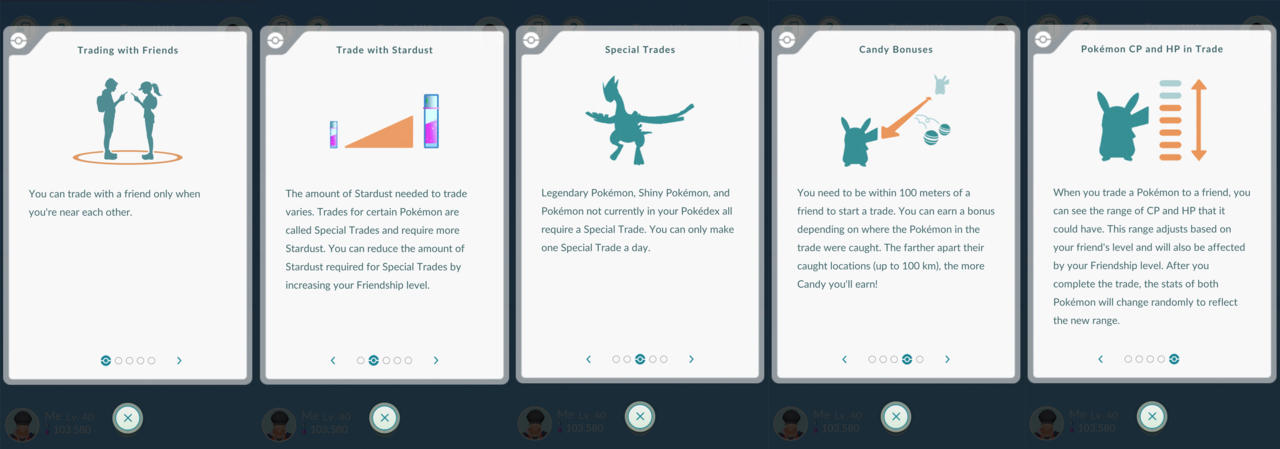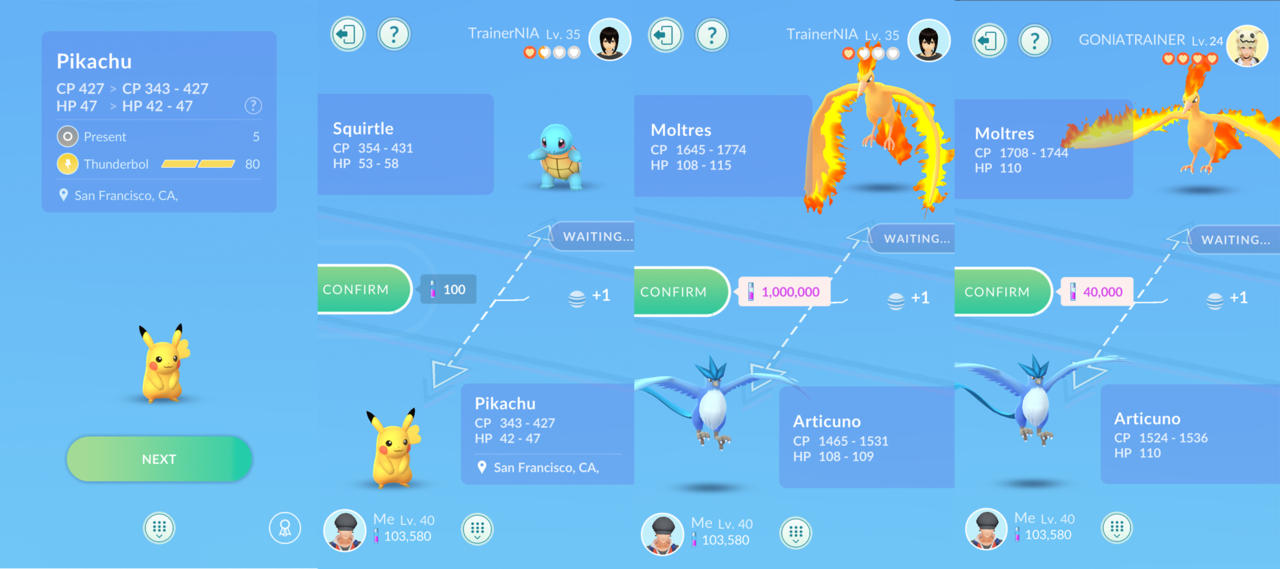New features have steadily rolled out for Pokemon Go since the game's launch in Summer 2016. These have ranged from an expansion to gyms (including group raids) to daily and weekly quests and events with a variety of rewards. But if there's one thing Pokemon Go is still missing two years later--one that players have been requesting since release--it's Pokemon trading. Now, it's finally happening: Pokemon Go is getting trading, Niantic confirmed during a meeting with journalists at E3. [Update: A new update is now live, enabling Pokemon Go's trading and friends systems, although trading for now is restricted to those who have reached a certain level. Read on for details about exactly how trading works.]
Trading will arrive in Pokemon Go "soon," meaning in the next month--Niantic representatives confirmed that players will be able to trade Pokemon with one another by the time Chicago's Pokemon Go Fest 2018 begins on July 14. Along with trading, Pokemon Go is also getting a robust friends system, and the two features will tie together in various ways.
Making Friends

Beginning soon, Pokemon Go players will be able to send one another friend requests using lengthy numerical friend codes, similar to the codes used on Nintendo consoles like the Switch. Players won't need to add one another's codes; if you have another player's code, you can send them a friend request, and they don't need to enter your code as well. At launch, each player's friends list will be limited to 200 players, and although that may expand in the future, Niantic confirmed that it has no plans to charge players in-game currency, which can be bought with real money, for expanded friends space. In other words, you'll never have to spend money to make room for more friends.
Your friends list will live as another tab on the trainer screen accessed by tapping on your character portrait in the bottom left of the screen. From there, you can see various stats (level, distance walked, number of Pokemon caught, etc.) and send your friends "gifts," which are a new item you'll collect from PokeStops. When you open a gift received from a friend, you'll see a postcard of the location where they collected it (take a screenshot if you want, because there's no way to save these postcards), and you'll receive a handful of items that may include new 7km eggs that can contain Alolan forms of Pokemon originally from the Kanto region (Pokemon Red/Blue). This will be the only way to obtain some Alolan forms, while others will be exclusive to raids or will appear during special events, like Alolan Exeggutor did briefly before E3.

You can also see your "friendship level" with each friend, which is tied closely with the new Pokemon trading feature. There are four levels of friendship, with "best friends" at the very top. You can increase your friendship level with specific friends by battling at rival teams' gyms together, raiding together, sending and receiving gifts, and trading Pokemon. Battling with friends also applies bonuses during battle that include attack buffs and extra balls for the catch phase. These don't stack for the whole raiding group; instead, the highest friend bonus of the entire raiding group is applied for all players.
Your friendship level with a specific friend can only increase once per day. More importantly, Niantic has designed the requirements to reach the highest levels of friendship so that it should take months to become "best friends" with another player.
"To get from 'friend' to 'good friend' is one day, and then from 'good friend' to 'great friend' is seven days total, and then 'great friend' to 'ultra friend' is 30 days total, and then 'ultra friend' to 'best friend' is 90," said Niantic engineer Kirsten Koa, the tech lead for these new features.

This is crucially important for one specific reason: The higher your friendship level, the less stardust it costs for two players to trade Pokemon.
Trade-offs
Collecting Pokemon is intrinsic to enjoying Pokemon Go, and two years into the game's lifespan, many players have impressive collections of powerful, rare, shiny, region-exclusive, and otherwise unique Pokemon in their games. If trading Pokemon in Pokemon Go was easy or cheap, it would ruin an essential part of what makes the game special. Niantic is acutely aware of that, and they designed Pokemon Go trading with limitations and costs designed to not detract from the pride many players feel in their Pokemon collections and the work players put into finding unique Pokemon.
"People work really hard to catch all these different pokemon," Koa said. "They travel to different continents and all that stuff. We don't want to devalue their effort by making trading so easy."
Trading Pokemon costs stardust, an in-game resource that's obtained through everyday play activities like catching Pokemon and hatching eggs. Currently, stardust is used to power Pokemon up, which has made it a scarce material for many high level players. (You can't buy stardust with real money, although you can spend money on special item boxes that contain items which increase the rate at which you gain stardust through other activities.)
Trades will cost the same amount of stardust for both players, which will discourage uneven trades and prevent players from trading with themselves via dummy accounts. Niantic showed journalists several examples of how much a Pokemon trade might cost. For players at lower friendship levels, making a "special" trade--trading a legendary Pokemon, a region exclusive, a shiny, or one that either player doesn't already have in their Pokedex--might not be possible at all, or might cost up to 1 million stardust.

Some high level players might have that much stardust to spare, but by anyone's measure it's a huge amount. In contrast, if you've achieved the highest possible level of friendship with someone, that same trade might cost only 40,000 stardust.
There are several other caveats designed to prevent the trading feature from de-valuing players' collections, and which Niantic hopes will prevent a "black market" from springing up around the feature. You can only trade with other players in person--there are no online trades in Pokemon Go. Both players must be level 10, and you have to be friends with one another. "Special" trades (as described above) can be made once per day. And a Pokemon's base stats--in other words, its IVs, or the stats that the game hints at when you use the "appraisal" feature--will change when it's traded, a limitation that is sure to frustrate the most hardcore players.
The thinking behind that is complex, but at its core it's designed to encourage players to trade Pokemon based on external attributes like shininess, rarity, and Pokedex completion, and not on intrinsic, semi-hidden attributes like specific IVs. Pokemon Go allows players to determine individual Pokemon's general base stats using a nonspecific "appraisal" feature that assigns each Pokemon a vague rating, but many players use third-party tools, like the phone app Poke Genie, to determine a Pokemon's exact IVs.
By randomizing IVs when a Pokemon is traded, Niantic ensures that those hidden stats won't be a factor in trades. Players with 100 IV Pokemon--Pokemon with perfect base stats, in other words--will want to keep those Pokemon instead of using them in trades. It's not all bad, though; a Pokemon's IVs can improve during a trade, and the higher your friendship level, the higher the Pokemon's base stats might become.
"One of the considerations for trading is we don't want there to be a black market," Koa told GameSpot after the presentation of these new features. "When Pokemon Go first came out, people were selling accounts online, and when trading comes out, we don't want the same thing to happen with like, 'perfect' Dragonites or something. And this is one way to prevent that."
"You can still get stronger Pokemon, though," she explained further. "Like I was mentioning with the friendship level, you can trade low IV Pokemon, and then maybe it will become something special when it gets to your phone." The likelihood of that happening--versus the alternative, which is trading a Pokemon with good stats and having them become worse--depends on your friendship level, she said.

(As a side note, Koa also provided an interesting glimpse at how Niantic communicates about these things internally, versus how the company speaks about them publicly: "We call them IVs internally, but since it's not communicated in the game, we don't really want to say IVs [in public], because we want to be friendly to casual users," she told GameSpot.)
It's not all limiting. You can get a Pokemon candy bonus when trading Pokemon that increases based on how far away the Pokemon were caught. Niantic showed an example where one player traded a Dratini caught over 100km away and received three candy. You can also change a Pokemon's nickname even after receiving it in a trade.
More To Come
Niantic said there are more features related to friends and trading coming this year. One thing they want to implement is sending friend requests via social networks, including Facebook. Their goal is to make Pokemon Go "the most sociable game in the world," according to the game's global product marketing manager, Kento Suga.
"Implementing trades for this type of game is very, very difficult, so we believe that this is the best way to be fair to the users, and safe for the users, and also fun for the users," Suga said. "This is just the first step of implementing new social related features. There are more and more coming later this year."
"Friends and trading is a really important aspect of the Pokemon franchise, so leading the implementation of these features has been one of the most exciting--but stressful--points of my career," Koa said, explaining that she played the original games and traded Pokemon cards with friends and family as a kid. "We wanted to make sure that we got things right. We needed to take into account how to introduce trading into this game, where exploring new places is really important to the game balance. We didn't want to mess with that. I hope we came up with something that's enjoyable and natural and safe for our users."





